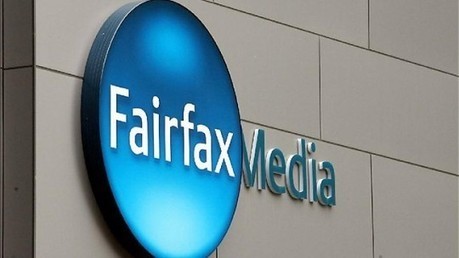 Your new post is loading...
 Your new post is loading...
Over the past couple of years, several popular websites have incentivized their writers with a compensation plan that sounds reasonable: If your stories generate more clicks, we’ll pay you more.
But think about the real-world implications of that for a moment. If a writer / aggregator / reporter / blogger (let’s shorten that to the acronym “WARB”) has a direct incentive to generate more clicks, do you think they’re going to go with a straightforward headline or a more sensational one? Do you think they’ll look to exploit inadvertent “mini gaffes” more than they otherwise might?
I want to be careful not to suggest that all WARBs with a financial incentive would sensationalize their reporting. Perhaps the needle of public interest and popularity can be threaded, in some cases, simultaneously. And this overall trend of writing with traffic in mind is far from new. But, even with all of those caveats, it’s yet another troubling trend that makes a spokesperson’s job that much more challenging.
You’ll find a few examples of this trend below. Some of the sites listed in these news articles have since gone defunct, while others may have subsequently altered their revenue models....
A list of blogs by journalists, journalism academics and photo-journalists sharing tips and perspectives on topics such as social media, data journalism, apps, tools, and the latest developments in the industry.
The blogs are grouped by subject and are listed in random order. We have not included any blogs hosted by news organizations or other sites. This is an updated version of our 50 blogs by journalists, for journalists, published in January 2013....
...Why should PR care about a metro daily with a print circulation that tips 185,000 and page views commensurate of a metro reach?
What’s taking place at The Oregonian reflects a bigger trend that absolutely has relevance to PR, an accelerated push by daily newspapers to find favorable economics in their online properties.
Take a look at the following slide from The Oregonian presentation to employees – leaked to the media, making for an ironic double entendre – that calls out the content goals...
This is a very strange situation, so I should explain. In October, about a month after I'd started my new job as a tech columnist for the Wall Street Journal, long-time New York Times tech writer...Indeed, even after I got the NYT offer, I agonized about what to do. Yes, this is sort of like the agony of choosing between two very delicious pieces of cake, but still. I was on the fence about this, and though I’m thrilled beyond words about the NYT, I really hope those guys at the WSJ know that I bear them no ill will.I’d wish them the best of luck, but they don’t need it.I start at the NYT in February. It will be fun....
A crowdsourced hunt for the bombers was unambiguously counterproductive ...There’s an art to working out where to find fast and reliable information, and to judging new information in light of old information, and to judging old information in light of new information. And there’s an art to synthesizing everything you know, from hundreds of different sources, into a single coherent narrative. It’s not easy, it’s not a skill that most people have, and it’s precisely where news organizations add value.
But in this particular case, as Noah Brier points out in a post headlined “Being Part of the Story”, it’s something that millions of people ended up attempting to do, on the fly, anyway: "Everyone wanted to be involved in “the hunt,” whether it was on Twitter and Google for information about the suspected bomber, on the TV where reporters were literally chasing these guys around, or the police who were battling these two young men on a suburban street. Watching the new tweets pop up I got a sense that the content didn’t matter as much as the feeling of being involved, the thrill of the hunt if you will. As Wasik notes, we’ve entered an age where how things spread through culture is more interesting than the content itself."
A look inside the operations of a major online publication—The Atlantic—and the evolving standards of how content is assigned, sourced, and paid for. The post consists of an e-mail exchange between Thayer and an Atlantic editor, where Thayer is asked if he would repurpose a previously published piece for the Atlantic’s website. He is not offered any money, but is told he will gain exposure since Atlantic’s site enjoys 13 million readers per month. For those familiar with the online world of publication, this exchange is hardly surprising or unusual. If you scan the posts at Who Pays Writers, you’ll see that $0 or maybe $50–$100 is common for very well-known sites. In fact, the more traffic a website gets, the more it can avoid payment by offering the carrot of exposure—which is indeed valuable and needed for some writers, but not all. Thayer, in response to the offer of pay through exposure, says: "Frankly, I will refrain from being insulted and am perplexed how one can expect to try to retain quality professional services without compensating for them. Let me know if you have perhaps mispoken [sic]."...
"What is needed are newsrooms that can filter, verify, curate, and amplify social media for their audiences, in addition to journalists reporting in enterprising and contextual ways." The approach that large traditional news organizations take in breaking news needs to be re-thought in the age of social media. Hurricane Sandy provided an example of how resources are often wasted by journalism organizations during breaking-news events while also demonstrating how vital authenticating coverage can be.... What is needed are newsrooms that can filter, verify, curate, and amplify social media for their audiences, in addition to journalists reporting in enterprising and contextual ways. Andy Carvin at NPR excelled at this during coverage of the Middle East and I think we should and will see more of it in 2013....
You read that correctly. There is no such thing as objectivity in journalism. And it's time to get over it. Every journalist has a political point-of-view and they don't magically check that at the door the minute they land a job. [Many would disagree with Andrew Kirell's point of view. I think it's an accurate reflection of journalism today ~ Jeff]
Via LPM Comunicação SA
Newsweek is ending its print edition. You'd think they'd express concern for their readers. You'd be wrong. Newsweek editor-in-chief Tina Brown and CEO Baba Shetty made a big announcement earlier this morning.
After 80 years as a weekly print magazine, they wrote, Newsweek plans to end its print edition in December and continue on only in a digital format.
But I noticed one GIANT omission in their statement. The entire statement is below. See if you can spot the omission....
[There's also another Key point missing from their statement which I mentioned in a comment to Brad Phillips' post. See if you can spot it too. ~ Jeff]
Google's "billions of clicks" are only half of the story. There is, on the one hand, an incredibly simple explanation for the shift in news organizations' attitude toward Google: clicks. Google News was founded 10 years ago -- September 22, 2002 -- and has since functioned not merely as an aggregator of news, but also as a source of traffic to news sites. Google News, its executives tell me, now "algorithmically harvests" articles from more than 50,000 news sources across 72 editions and 30 languages. And Google News-powered results, Google says, are viewed by about 1 billion unique users a week. (Yep, that's billion with a b.) Which translates, for news outlets overall, to more than 4 billion clicks each month: 1 billion from Google News itself and an additional 3 billion from web search. As a Google representative put it, "That's about 100,000 business opportunities we provide publishers every minute." Google emphasizes numbers like these not just because they are fairly staggering in the context of a numbers-challenged news industry, but also because they help the company to make its case to that industry. (For more on this, see James Fallows's masterful piece from the June 2010 issue of The Atlantic.) Talking to Google News executives and team members myself in 2010 -- the height of the industry's aggregatory backlash -- I often got a sense of veiled frustration. And of just a bit of bafflement. When you believe that you're working to amplify the impact of good journalism, it can be strange to find yourself publicly resented by journalists. It can be even stranger to find yourself referred to as a vampire. Or a pirate. Or whatever.... [Thoughtful post and reflections on the relationship between Google and news - JD]
For CNN anchor Wolf Blitzer, the promise of social media's impact on coverage of the Republican National Convention is simple:... It can turn reporting the news into a conversation. "Very often, I'll get a tweet from somebody who (notes a mistake) ... and I'll correct it right away," said Blitzer, who wasn't even on Twitter during the 2008 RNC and now has 540,000 followers. "I know it will change our coverage in Tampa." That's the kind of interaction a host of technology companies, media outlets and even convention organizers expect at the RNC; leveraging a host of social media platforms to place huge chunks of what happens here online.... [Interesting convention report, assuming it goes ahead - JD]
Ryan Holiday could be called an “expert.” As head of marketing for American Apparel, an online strategist for Tucker Max, and self-styled “media manipulator,” he can talk social media and modern advertising with the best of them – he’s done so both... online and in print on countless occasions. He is not an expert in barefoot running, investing, vinyl records, or insomnia. But he is a liar. With a little creative use of the internet, he’s been quoted in news sources from small blogs to the most reputable outlets in the country talking about all of those things. Holiday, 25 years old and based in New Orleans, mostly wanted to see if it could be done. He had been getting blogs to write what he wanted for years, and had developed a sense of how stories were put together in the internet age. He thought he could push the envelope a bit further.... [Great read - JD]
'Digital First' editorial model changes the game... ...The flow on effects from today’s announcement are yet to be seen and will continue to be debated over the coming days.
But for the PR industry, there are two components from today’s announcement with big implications, the editorial job cuts and the ‘Digital First’ editorial model. Combine these together and we see the reality of a trend that has already been happening for some time.
The ‘Digital First’ model means all breaking news and content must be digitally optimized with editorial staff more or less forced to file multiple times online every day. Essentially, there will be fewer journalists writing stories (and fewer journalists to pitch to) but with more pressure to write more online optimized stories, more often....
|
The need to urgently shield investigative journalism in the post-Edward Snowden era is the burning issue in newsrooms globally, according to the World Editors Forum‘s Trends in Newsrooms 2014 report, launched this week.
The report was released at a gathering of more than 1,000 media professionals in Turin, Italy, at the annual World Newspaper Congress.Based on interviews with more than 30 editors in a dozen countries, the Paris-based World Editors Forum has identified the top trends in newsrooms in 2014 as...
A new survey from Dutch company ING found that 45 percent of international journalists “publish as soon as possible and correct later,” while only 20 percent always do their due diligence before publishing.
Additionally, the 2014 Study Impact of Social Media on News report, created for PR professionals and journalists, reported that one-third of journalists don’t consider social media posts a reliable source of information. Still, 50 percent said the majority of their news tips and facts come from social.
But journalists don’t seem to mind questions of accuracy too much, since 60 percent said they feel less restricted by journalistic standards in their social media reporting. Twenty-two percent reported that they treat social media posts the same way as traditional methods when it comes to journalism ethics....
WIthout more evidence, it's time for a retraction....
...The problem with the story is that it doesn't appear to be true. Dorian Nakamoto—who hasn’t gone by the name “Satoshi” in almost 40 years—made the second of two very public denials this week. “I got nothing to do with it,” Nakamoto said during his first denial, a two-hour interview with the Associated Press.
Goodman’s story looks like a scientific experiment gone bad: it can’t be replicated. It’s grounded in assumptions, topped with myths and stereotypes, and then backed up by an arrogant-sounding “trust us” defense.
The AP video shows a man who appears wholly convincing. “The main reason I’m here is to clear my name, that I have nothing to do with Bitcoin,” Nakamoto said. “Leah wrote all that?” he added with a shake of his head, incredulous. If Dorian Nakamoto is the hidden genius behind Bitcoin, he's also one of history’s most skilled liars; his impression of “unemployed suburban man” was spot-on....
On Sunday, New York Times reporter Jennifer Steinhauer explored how the Sunday network interview show producers and politicians “collaborate in a seductive ritual” to book the most powerful guests. But there’s a great sameness on the guest list: Sen. John McCain’s done 60 Sunday shows just since 2010.
Steinhauer says he’s a “dream guest” in part because he “compares members of his own party to deranged fowl” (wacko birds), at least at liberal networks: When it comes to a dream guest, program hosts say, Mr. McCain checks almost every box: a senior Republican senator who can speak authoritatively and contemporaneously on many issues, flies secretly to Syria, compares members of his own party to deranged fowl and yet is a reliable opponent of most Obama administration policies.
“What makes a good guest is someone who makes news,” said Mr. Wallace, the Fox host. “To make news, you have to be at the center of the news and willing to talk about it in a noncanned way, someone who always come to the shows ready to play.”
The recent dustup between Nate Thayer and The Atlantic concerning payment (or lack thereof) for freelance writers has highlighted a fact obvious to many working in newsrooms across all platforms: Writers, as a profession, don’t make very much, especially considering the volume of work they perform on any given project. Charles Pierce said as much in a post for Esquire last week, chastising the Washington Post’s Ezra Klein for writing that much of the quality copy for news organizations is already being written for free by professionals who aren’t journalists, but rather “academics and business consultants and market analysts and former politicians.” These sources, Klein argues, “have the expertise that makes editors — and readers — trust them.” This is a defensible position, Klein argues, because most journalists are simply repackaging their sources’ point of view, and the sources aren’t paid for their contributions. But as Pierce notes, there’s much more to being a writer than expressing a point of view for the Opinion section...
When a helicopter crashed in a densely populated part of London around 8am today, next to one of the busiest trainlines in Europe and a large bus station, the news was always going to be broken, within seconds, by members of the public on Twitter, armed with camera phones.
Twitter user Craig Jenner was one of the first to put a picture on Twitter which was shared far and wide.
What happened next is indicative of the way the media are increasingly playing catch-up on such stories, moving from reporting to aggregating (or curating, if you must) - images, eye-witness accounts and videos. Journalists were asking to use the picture with a credit and were trying to get Jenner on the phone...
The massive shift toward digital media continues for new and traditional press outlets. Here’s how you can explain the change to your clients, including why it helps them. ...A few weeks ago, Newsweek became the latest magazine to announce it would cease publication of its print edition in favor of a digital-only format by year’s end. This isn’t the first announcement of its kind in 2012: SmartMoney Magazine killed its print publication in the summer, and rumors have swirled that the U.K.’s The Guardian is considering a switch to a digital-only edition. This trend will likely continue in the coming years as, according to the Pew Research Center’s statistics on print vs. online media, more than half of Americans receive their news from digital sources, and the number of people relying on social media exclusively for their news has doubled in the past two years. So how do public relations pros communicate this ever-changing landscape and its importance to clients?...
Newsweek cancels print edition and Clark Kent quits the Daily Planet. What's going on with the world of print? ...Add it to the announcement last week that rocked the print industry, Newsweek ending it’s print circulation, and it forms a bleak picture for print.
Why do I compare the Daily Planet’s loss to Newsweek’s digital shift?
Easy. Monkey see, monkey do.
My journalism drive came from what I saw. And what 12-year-old me saw was a top-shelf newspaper reporter who saved the world. And that inspiration is gone.
Newsweek, in print for 80 years, has been a constant in the ever-changing newsstand. And now it’s all in bits and bytes....
[My thought is that for every magazine or newspaper that fails a new and more relevant news innovation will take its place ~ Jeff]
A starter list for those beginning journalism university courses, created with the help of the followers of our @journalismnews Twitter account... [I'd pick 10 to 20 of the top ones from this list as a starting point- JD]
Do newspapers have a shot at stepping ahead of their broadcast rivals as web video evolves? Our political conventions remind us that this is not the summer of love. But it may be the season we’ll remember as the summer of video. Certainly, video’s — news video’s — growth has been noteworthy for awhile. But now there’s a bursting of new news video forms, a hothouse of experimentation that is both refreshing and intriguing. The blossoming has implications far and wide, not just for “news,” but for tech companies like Facebook and television brands from Ellen to Piers to The View. Within it, we see the capability of non-TV companies to leapfrog the TV people. Just Monday, both The Wall Street Journal (“The Wall Street Journal wants its reporters filing microvideo updates for its new WorldStream”) and The New York Times made video announcements. A couple of weeks ago, the ambitious Huffington Post Live launched, hiring the almost unbelievable number of 104 staffers. In these three forays, and in the thinking in and around them, we see the boundaries of old media being slowly broken. We’re on the edge, finally, of new ways to both create and present news — and how to talk about the news.... [Trend for PR to follow closely - JD]
NEW YORK — A new study has found that YouTube has become a major platform for news, one where viewers are turning for eyewitness videos in times of major events and natural disasters. The Pew Research Center’s Project for Excellence in Journalism on Monday released their examination of 15 months of the most popular news videos on the Google Inc.-owned site. It found that while viewership for TV news still easily outpaces those consuming news on YouTube, the video-sharing site is a growing digital environment where professional journalism mingles with citizen content. “There’s a new form of video journalism on this platform,” said Amy Mitchell, deputy director of the Pew Research Center’s Project for Excellence in Journalism. “It’s a form in which the relationship between news organizations and citizens is more dynamic and more multiverse than we’ve seen in most other platforms before.”...
...Television has always excelled at creating personalities and at telling intimate stories. Yet over a generation defined by such signature figures as Oprah Winfrey's talkshow and Ronald Reagan's "Great Communicator" label, the medium has all but lost its ability to grapple with big ideas and concepts, becoming wholly reliant on anecdotes meant to engage viewers emotionally, not intellectually. Anecdotal news means that serious issues must be brought home through personal tales -- a trend that has become conventional wisdom in both news and politics. Witness the frequent critique of President Obama as being too professorial, compared with Reagan's signature ability to put lumps in throats by virtue of the imagery he conjured. In a timely demonstration of this tension, on the heels of the landmark Supreme Court ruling on health care reform, ABC News will launch "NY Med," the latest cinema-verite series chronicling the dramatic, harrowing and occasionally darkly comic doings at a major metropolitan hospital....
|
 Your new post is loading...
Your new post is loading...
 Your new post is loading...
Your new post is loading...












![Breaking [News] is broken | Nieman Lab | Public Relations & Social Marketing Insight | Scoop.it](https://img.scoop.it/E_CUWUpjqNv8j07Dvgu1Uzl72eJkfbmt4t8yenImKBVvK0kTmF0xjctABnaLJIm9)






















Brad Phillips looks at the impact of pay per click journalism.